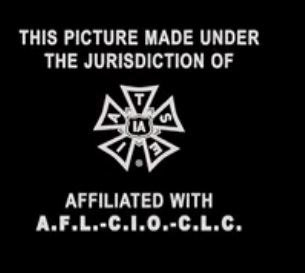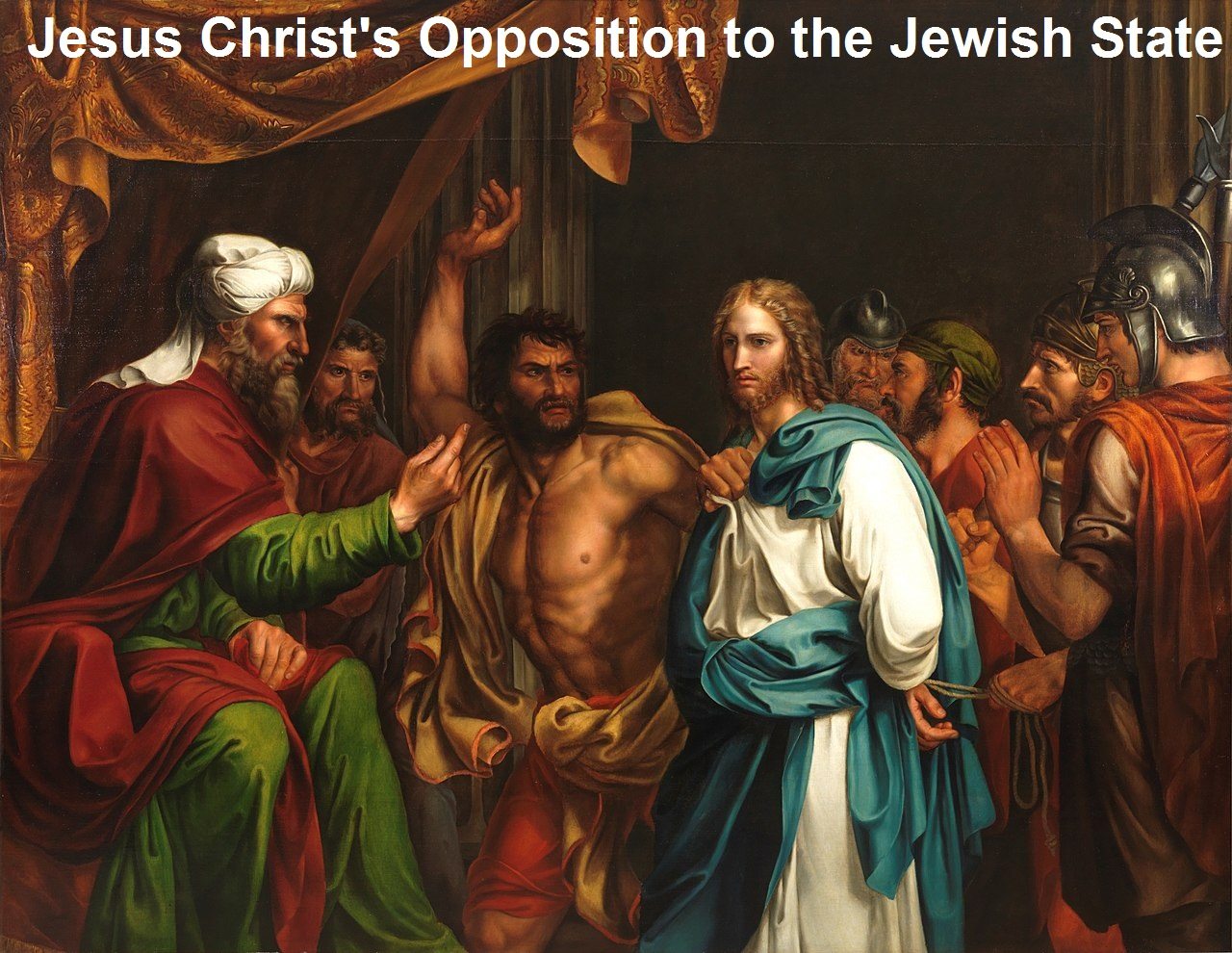
Screenshot from the new Netflix Movie: Leave the World Behind.
by Brian Shilhavy
Editor, Health Impact News
Netflix recently released a new fictional film titled “Leave the World Behind” which dramatizes what could happen with a cyber attack against the U.S. I watched this film yesterday, since online comments about it were all over the place in trying to interpret it.
I am recommending everyone to watch this film. There is a lot of cussing and use of the “F” word, so be forewarned about that. If you are not subscribed to Netflix, you can purchase a 1-month membership just to watch the film and then cancel your subscription. There are also probably bootleg copies online as well.
Because the film was (at least partially) funded by the Obamas, the Right Wing Alternative Media is interpreting this film through the lens of Conservatism with partisan views, which makes them completely miss what is so clearly being communicated in this film.
I have read comments, for example, stating that this film was anti-White people and anti-humanity. This is absurd, as the two families portrayed in this film, a White family with a mother and father and two children, and a Black father with his young daughter, actually overcome their racial biases in this film, and learn that their shared humanity makes them far more similar as they are facing the same problems together in an apocalypse scenario like a cyber attack.
I captured a screenshot of the White mother and the Black daughter holding hands as they watch New York City being bombed from a rural area on Long Island, which clearly shows how these Right-wing biased reviews completely miss the point due to their own biases.
There is most certainly a lot of symbolism and hidden meanings throughout the film, and you will not like the ending which is intentional, but I encourage you to watch it for yourself rather than reading what other people think about it, including me.
If you cannot imagine what a cyber attack and other resulting types of attacks, such as EMP attacks, would look like if they happened, I do think this film is probably an accurate portrayal of what that could look like.
Many are claiming that this film is “Predictive Programming” in helping the public get ready for this actually happening in real life.
I don’t necessarily disagree with that, but one has to understand that pretty much EVERYTHING you watch that is produced by the Corporate Entertainment industry is “predictive programming,” and has been that way since TV and the Big Screen movie industry started after World War 2, in the 1950s, which (non)coincidentally is also just after the time frame for when the CIA was formed.
And this film is anything but an “Independent” film, as the credits clearly show that it was produced under the influence of the Freemason Unions that control this industry:

There is a specific message that they want you to believe in this film, so be careful as you watch it, and look for some of the symbols and ideologies they use to get a clue as to what they want you to believe.
Many believe that “predictive programming” means that the Globalists who run the world are giving the public a glimpse into their world, by using fiction. For many years, I believed this myself, thinking that these major productions reflected how the world is actually run.
However, while that is probably partially true, I now believe almost the exact opposite: That the Globalists often first make their plans, and then get the Entertainment Industry to write a script for it to introduce it to the public, to see how they react, BEFORE any of this actually happens.
Or in other words, most of the world’s major events are first conceived and broadcast as fiction in the Entertainment Industry, before they actually happen, so they can see how the public might react to and receive the news when these events occur. If a film is a bust, they probably move on to Plan B, Plan C, etc.
I grew up as a child in the 1960s, long before the Internet and the Digital Age, but at a time where most Americans were beginning to be able to afford to purchase a TV for their homes. I remember how our family participated in the “Nielsen ratings“, where they sent us a booklet that listed all the future TV listings for a coming week, and we had to record what shows we watched as well as our reactions to them.
This was how they collected data on viewer habits before the digital age, and I wouldn’t be surprised at all if the military and intelligence agencies had access to this data even back then. It was probably this data that convinced them that the public was ready for a fake moon landing in 1969.
If indeed this premise is true, that no major “false flag” events or wars are implemented without data existing first showing that the public is accepting of such an idea as “believable” based on their viewing habits, then a cyber attack is probably most certainly inevitable in the future, as this movie quickly jumped to #1 on Netflix just after it was launched.
Netflix’s new movie, an apocalyptic thriller, debuts at Number 1 on their global English-language movies chart with millions of hours viewed.
Leave the World Behind has debuted with a high rank on the Netflix chart. The new movie, which was written and directed by Mr. Robot‘s Sam Esmail, stars Julia Roberts, Mahershala Ali, Ethan Hawke, Myha’la, and Kevin Bacon. Based on Rumaan Alam’s 2020 novel of the same name, it follows a family whose idyllic Long Island vacation is shattered when a cyberattack kicks off an apocalyptic scenario.
Netflix has now calculated their Top 10 English-language movies for the week of December 4 through December 10. The Leave the World Behind movie has claimed the No. 1 spot on the chart, above other popular Netflix originals such as Leo and Family Switch. The new movie has accumulated 98.7 million hours viewed thanks to 41.7 million views. (Source.)
The warning of a cyber attack and “Cyber Pandemic” has also been published quite frequently by the World Economic Forum since at least 2021.
Here is an interview of Whitney Webb on Redacted from a couple of weeks ago, who provides intel on who is behind a lot of these plans for an alleged “false flag” cyber attack that our own government is probably actually planning, and will be blamed on outside sources, such as Iran.
This video is just over 25 minutes long, and well worth viewing (currently at about 830,000 views at the time of publication):
The Great Taking – Get Ready for the Collapse of the Financial System
Another corroborating source about what is about to happen, is the non-fictional work of David Webb, someone I had not heard of before this week.
Webb has published a new book that anyone can download for free, as well as a documentary.
I have not watched the documentary, but I have read about 75% of the book since yesterday (I started with the Prologue and then worked my way back from the Conclusion), and I have to say this is definitely a MUST READ!
David Webb has an incredible Bio, and came from a family deeply involved in Freemasonry. He was a successful Wall Street manager for years, and now lives in Switzerland where he owns farmland. He is originally from Cleveland.
I would consider Webb a true “whistle-blower” who knows the intricacies of Freemasonry and the world’s financial system, through previous experience.
Here are some excerpts from his Prologue:
If you prefer, consider this a work of fiction, or the ravings of a madman. Perhaps I am crazy.
I know that you will not hear what I am struggling to tell you—not yet. But, perhaps as things unfold, this writing will offer some explanation of what is happening.
In my mind as I write this is the small hope that my children might one day come to understand me a little, and, perhaps, forgive me for being who I have been. It has been unavoidable for me to see and know about unpleasant things, which are now becoming manifest.
Presently, as we well know, families are divided. People are experiencing a kind of isolation, perhaps not physically, but in spirit and mind. This has been made to happen through the dark magic of false news and narrative. This alone has been a great crime against humanity. The tactical purposes are many: to confuse and divide; to cause disengagement; to demoralize; to instill fears and to introduce false focal points for these fears; to manipulate the historical narrative; to create a false sense of the present reality; and ultimately, to cause people to acquiesce to what has been planned.
Facing this onslaught how can one know anything? Direct knowledge acquired through ones own experience and the personal experiences of others may be used to pierce these false narratives. Living memory contains clues. What has been done before can be done again.
How have I come to know what I am trying to tell you?
I am old enough to remember the JFK assassination. I was sitting in the little basket in the front of a shopping cart at Fazio’s grocery store on Lee Road when the announcement was made over the speaker. A woman standing nearby burst into tears.
Within a few years of the assassination, we were living the industrial collapse of the U.S.
For a boy in a family of engineers, in the crane and hoist business, in Cleveland, the years ahead would be very much like living through the Great Depression. In the summer of 1966, a portion of the city was burned in the Hough Riots. The National Guard was called in and placed machine gun nests on roofs.
On top of the riots, little Webb Equipment was being targeted by the Teamsters Union; windshields were smashed with baseball bats. Due to the threat of Molotov cocktails, records were moved out of the office, and roofs were hosed down at night.
It was like living in a war zone, and it was going to get much worse. There would never be a “recovery.” There would be complete destruction of everything we had known.
However improbable it seems now, Cleveland had been one of the most vital industrial centers of the world.
In the 19th century and into the 20th, it was like all of industrial America in one city. I remember reading that, at one time, the Cuyahoga Valley was producing 2% of the world’s industrial product. The early days of the iron, steel, aluminum, chemical, automotive, aeronautics, and oil industries were all in Cleveland.
Standard Oil was formed there. Rockefeller’s first refinery was there.
John D. is buried in Lake View Cemetery, as are both sides of my family, who were descended from early English settlers. Some of these forebears had arrived with the first settlements in Jamestown and Plymouth.
William Bradford was an ancestor. The Webbs had common ancestry with John Adams, Samuel Adams, and John Quincy Adams. We had Masonic swords and little porcelain statues of Washington and Franklin dressed in their Masonic regalia.
Dad, his brother, and their father and grandfather had been Masons. Despite this, it seems they did not get the memo about what was coming.
This is just a short segment from his Prologue, and I encourage you to read the rest.
According to Webb, everything is now in place for the Banks to steal our money in the “Great Reset.”
But probably few living today know that this won’t be the first time this kind of “Reset” has happened, where Americans lost everything that was on deposit in their U.S. banks.
Here is Chapter 8 from his book: Bank Holiday.
Bank Holiday
My Aunt Elizabeth had been ten years old when the banks were closed by executive order in 1933 [30]. When I asked her to tell me about the Great Depression, she said that suddenly no one had any money, that even wealthy families had no money and had to take their daughters out of private school because they could not pay the tuition.
I wondered why even these wealthy families could not send their children back to their schools after the banks were reopened.
The answer is that only the Federal Reserve Banks and banks selected by the Federal Reserve were allowed to reopen.
“The Federal Reserve Banks,” writes Allan Meltzer, “sent the Treasury lists of banks recommended for reopening, and the Treasury licensed those it approved.” Meltzer’s study “A History of the Federal Reserve” [31] is considered the most comprehensive history of the central bank.
People with money in banks that were not allowed to reopen lost all of it. Their debts were not canceled, however; these were taken over by the banks selected by the Federal Reserve System. If these people could not make their debt payments—which was now likely, since they had lost their cash—they lost everything they had financed with any amount of debt, e.g., their house, their car, and their business.
Thousands of banks were never allowed to reopen. The grand facades of former bank buildings could be seen around Cleveland. There was such devastation of banks that a neighborhood Catholic church was built with massive stone columns salvaged from a bank building which had been demolished.
The Cleveland Trust Co. had grown through acquisition to become, by 1924, the sixth largest bank in the United States. As noted by The Case Western Reserve University Encyclopedia of Cleveland History [32], “The bank survived the Depression well.” How was that possible?
It was selected by the Federal Reserve to consolidate debts. I had a finance professor who told the class that Cleveland Trust had run a systematic process of foreclosing upon and evicting many thousands of families from their homes in the greater Cleveland area. After these families were evicted from their homes, and their equity wiped out, they were offered the possibility of moving back into their former homes as renters, the advantage to Cleveland Trust being that these families would pay to keep the houses heated until they could be sold. Cleveland Trust did “well.” How did my finance professor know about this? His family was one of those many thousands of families whose home mortgage had been taken over by Cleveland Trust.
Contrast this with the cheery image conveyed by William L. Silber, who was a member of the Economic Advisory Panel of the Federal Reserve Bank of New York. In his article “Why Did FDR’s Bank Holiday Succeed?” [33], Silver writes:
Much to everyone’s relief, when the institutions reopened for business on March 13, depositors stood in line to return their hoarded cash to neighborhood banks. Within two weeks, Americans had redeposited more than half of the currency that they had squirreled away before the suspension. The market registered its approval as well. On March 15, 1933, the first day of trading after the extended closure, the New York Stock Exchange recorded the largest one-day price increase ever. With the benefit of hindsight, the nationwide Bank Holiday in March 1933 ended the bank runs that had plagued the Great Depression … Contemporary observers consider the Bank Holiday and the Fireside Chat the one-two punch that broke the back of the Great Depression … the speed with which the Bank Holiday Act reestablished the integrity of the payments system demonstrates the power of credible regime-shifting policies.
The Emergency Banking Act of 1933, had been passed by Congress on March 9, 1933, three days after FDR declared the bank holiday, with only a single copy available on the floor of the House of Representatives, and with copies being made available to senators as the bill was being proposed in the senate, after it had passed the house [34].
Was it successful? We are led to believe that the Bank Holiday was a brilliant scheme. Well it was—for some. It was enormously successful for those banking interests who took the assets and consolidated their power. It certainly demonstrated the power of “regime-shifting policies.” We will see that it was not just about taking peoples homes and other stuff. As to ending the panic, perhaps that is not so difficult to do when you have fomented the panic.
In the Wikipedia article “The Great Depression” [35] we find the following illumination of the Fed’s odd behavior in the years leading up to the bank holiday:
The Monetarist explanation was given by American economists Milton Friedman and Anna J. Schwartz. They argued that the Great Depression was caused by the banking crisis that caused one-third of all banks to vanish, a reduction of bank shareholder wealth and more importantly monetary contraction of 35%, which they called “The Great Contraction.” By not lowering interest rates, by not lowering rates and by not injecting liquidity into the banking system to prevent it from crumbling, the Federal Reserve passively watched the transformation of a normal recession into the Great Depression.
The Federal Reserve allowed some large public bank failures—particularly that of the New York Bank of United States [in December, 1930]—which produced panic and widespread runs on local banks, and the Federal Reserve sat idly by while banks collapsed. Friedman and Schwartz argued that, if the Fed had provided emergency lending to these key banks, or simply bought government bonds on the open market to provide liquidity and increase the quantity of money after the key banks fell, all the rest of the banks would not have fallen after the large ones did, and the money supply would not have fallen as far and as fast as it did.
This view was endorsed in 2002 by Federal Reserve Governor Ben Bernanke in a speech honoring Friedman and Schwartz with this statement [36]:
Let me end my talk by abusing slightly my status as an official representative of the Federal Reserve. I would like to say to Milton and Anna: Regarding the Great Depression, you’re right. We did it. We’re very sorry. But thanks to you, we won’t do it again.
As this is “ancient history”, it was safe for Bernanke to make such an admission. But more to the point, it would allow him to posture as the wise man who had studied the “mistakes” of the Federal Reserve, and then to justify the Fed’s extraordinary measures to follow in the Global Financial Crisis. Is the Fed indeed “very sorry”? Can one believe the promise that “we won’t do it again”? They have studied the lessons of the past in detail; however, their purpose has been to prepare a new and improved global version for the spectacular end of this debt expansion super-cycle. That’s what this book is about.
Contrary to the image of success, which has been handed down to us, the Bank Holiday did not end the Great Depression. There was no recovery which might have allowed people to service their debts and keep their property. Why was that? “Inexplicably”, the Federal Reserve kept conditions tight [37]:
According to literature on the subject, the possible causes … were a contraction in the money supply caused by Federal Reserve and Treasury Department policies and contractionary fiscal policies.
If that was a comprehensive program to assure there was no recovery, it worked quite well. Conditions remained broadly stressful for years, and they kept price levels down, so that people had no opportunity to sell assets for paying off debts. I know from family letters that, despite having no debts, times were quite tough. Grandma Webb wrote to her son (who was in a youth athletic program on an army base) about Grandpa Webb having been out trying to get any work for Webb Equipment. That was in 1936.
Contrary to the image of FDR as a savior, the people in my family who lived through the 30s considered FDR to be something like Satan himself, and they were not religious people.
Here is an interesting quote from Silber [33]:
The Emergency Banking Act of 1933, passed by Congress on March 9—combined with the Federal Reserve’s commitment to supply unlimited amounts of currency to reopened banks—created de facto 100 percent deposit insurance.
So according to William L. Silber, who was an economic advisor to the Federal Reserve Bank of New York, the Fed miraculously and suddenly in March of 1933 had the means “to supply unlimited amounts of currency to reopened banks”, which were, of course, only the banks selected by the Federal Reserve System. Clearly, the Fed had the means all along to avoid the failure of those thousands of banks. A panic can be fomented easily when you run the system. They made it happen. They planned it, and then brought their solution after they got their regime-shifting policies in place.
The Federal Reserve System and the banks selected by the Fed were prepared to take things from people on a vast scale: their homes, their cars, and even their new electric appliances, which had been sold to them with the innovation of consumer credit. Did “the bankers” need to take this property? What was the real purpose? Can you get past the idea that they were trying to help? Even if we can, we are always led to think about this in a small way—that it is always about a natural human greed for money and for material things. It was not then, and it is not now.
Ask yourself: if they don’t want your money, and they don’t really want or need your stuff, and they’re not trying to help you, what do they want? What’s the point of all of their efforts?
This may be difficult to hear: It was deliberate strategy. It was about ultimate, complete power, allowing no centers of resistance. And so, it was about deprivation. It was about subjugation—and it still is, in more ways than we know.
It was not about helping people then, and it’s not about helping people now. It is all part of the same deliberate herding of humanity and elimination of any pockets of resilience, which plagues us still.
While Cleveland is now a crumbling city, it was a center of incredible prosperity in the 1920s. The Federal Reserve Bank building in Cleveland was completed in 1923, less than ten years after the signing of the Federal Reserve Act. The bank vault is the largest in the world, and it incorporates the largest hinge ever built. It seems they were preparing to put a lot of stuff in there, and for the possibility that there might be some stress about that. Perhaps it was not to be filled with refrigerators, washing machines, and toasters. There are machine gun turrets above the sidewalk on the street level.
There was a larger objective.
The preparatory work had been laid when the Federal Reserve System was secretly planned, and with the passage of the Federal Reserve Act in the quiet before Christmas, 1913. The Federal Reserve Act set up an inevitable logic that the Fed must take the gold of the public in a sufficiently major crisis, with the justification that credit could not be expanded otherwise.
This is exactly what is now set up to happen with all securities owned by the public, globally.
Here is an important excerpt from the Wikipedia article on Executive Order 6102 [38] :
The stated reason for the order was that hard times had caused ‘hoarding’ of gold.
However,
the main rationale behind the order was actually to remove the constraint on the Federal Reserve preventing it from increasing the money supply during the depression. The Federal Reserve Act (1913) required 40% gold backing of Federal Reserve Notes that were issued. By the late 1920s, the Federal Reserve had almost reached the limit of allowable credit, in the form of Federal Reserve demand notes, which could be backed by gold in its possession.
The executive order to confiscate all gold owned by the public was made under the authority of the Trading with the Enemy Act of 1917, which had been enacted four years after the creation of the Federal Reserve. The act had been used to confiscate the property of interned natives of Germany, and more. This is described by Daniel A. Gross in his article “The U.S. Confiscated Half a Billion Dollars in Private Property During WWI” [39], whose subtitle reads: “America’s home front was the site of interment, deportation, and vast property seizure.”
Apparently all the U.S. public was now the enemy. Think about this. People who were simply protecting themselves and their families from the actions of the Federal Reserve System were accused of hoarding gold, and literally criminalized if they persisted in doing so. The rationale is incredible: You are hoarding gold, so we will take it and do what with it? Hoard it! As we have seen, once they had taken the gold of the public, they did not then use the resource to expand credit. People remained in a debt trap. The deprivation continued and even worsened. That was real enough. The rationale, however, had been planned. It was a construct!
I asked my father why people had turned in their gold. He said that if you did not you were a criminal, but further, that there was nothing you would be able to do with it because you could not legally transport or sell it. So, essentially, the use and value of gold had been confiscated. This was certainly the case because it remained illegal for a U.S. person to own gold for more than forty years!
Here are some excerpts from Executive Order 6102 [40]:
All persons are hereby required to deliver on or before May 1, 1933, to a Federal Reserve Bank or branch or agency thereof or to any member bank of the Federal Reserve System all gold coin, gold bullion and gold certificates now owned by them or coming into their ownership …
Whoever willfully violates any provision of this Executive Order … may be fined not more than $10,000, or, if a natural person, may be imprisoned for not more than ten years, or both …
Note that the penalties were quite severe, and that all the gold was literally to be turned over to the Federal Reserve System. How nice!
Now we can see the purpose of constructing, in 1923, the largest bank vault in the world and a fortified building!
Perhaps gold will not be confiscated immediately this time around. Gold has not been targeted as the essential collateral backing as was the case under the Federal Reserve Act. In this go-round it is securities of all kinds, globally, which have been set-up as the collateral backing underpinning the derivatives complex. It is quite possible that the big banks have suppressed the price of gold by selling “paper” gold in subsidiaries, which will be allowed to fail, while accumulating physical gold in subsidiaries, which are designed to survive. This, however, does not assure that you, as a member of the great unwashed, will be allowed to keep your gold, not if this juggernaut continues in motion.
I recall the words of my father, who had lived through all of this, “The only thing they can’t take from you is your education.”
Only the Federal Reserve System was designed to survive and take over all assets and banking activities. Only the Federal Reserve banks and those selected and controlled by the Federal Reserve were allowed to reopen. The Federal Reserve was also indemnified by the government (i.e., the public) for any losses.
And so, large-scale closure of banks and taking of bank deposits is not unprecedented. Holders of cash in banks are unsecured creditors with no enforceable claim to their money.
It has been promised that there will be no taxpayer bailout this time—as if that is a good thing. Why? Simply because this will allow the banks to be closed rather than nationalized. Then all deposits and assets will be taken by the “protected class” of secured creditors. This is where it is going.
Some wealthy people may think they will hide from this by keeping their money with the “too big to fail banks.” Perhaps it will seem that they have succeeded in this through the early stages of the banking crisis. However, this “regime shift” is designed to be all-encompassing.
The big banks are organized as holding companies with subsidiaries. The purpose of this structure is to legally separate risks. A subsidiary can be designed to take on liabilities, which cannot attach to assets in other subsidiaries or to the holding company. The weakened subsidiary can be separately bankrupted.
Ordinarily, the deposit-taking subsidiaries should be quite secure. But a strategy has been set up so that the deposit taking subsidiaries of the “too big to fail banks” can be separately bankrupted when the time comes. How can we know that?
The Fed has the power to give exemptions to any bank to move derivatives into deposit-taking subsidiaries, and it has done so. It has been tested, and on a large scale. Apparently it is easily and unilaterally done by the Fed by granting exemptions to Section 23A of the Federal Reserve Act.
Here are some excerpts from a Bloomberg News article from 2011 [41]:
Bank of America Corp., hit by a credit downgrade last month, has moved derivatives from its Merrill Lynch unit to a subsidiary flush with insured deposits, according to people with direct knowledge of the situation.
The Fed has signaled that it favors moving the derivatives to give relief to the bank holding company … Bank of America’s holding company—the parent of both the retail bank and the Merrill Lynch securities unit—held almost $75 trillion of derivatives at the end of June … About $53 trillion, or 71 percent, were within Bank of America NA, according to the data, which represent the notional values of the trades.
That compares with JPMorgan’s deposit-taking entity, JPMorgan Chase Bank NA, which contained 99 percent of the New York-based firm’s $79 trillion of notional derivatives …
Moving derivatives contracts between units of a bank holding company is limited under Section 23A of the Federal Reserve Act, which is designed to prevent a lender’s affiliates from benefiting from its federal subsidy and to protect the bank from excessive risk originating at the non-bank affiliate, said Saule T. Omarova, a law professor at the University of North Carolina at Chapel Hill School of Law. …
In 2009, the Fed granted Section 23A exemptions to the banking arms of Ally Financial Inc., HSBC Holdings Plc, Fifth Third Bancorp, ING Group NV, General Electric Co., Northern Trust Corp., CIT Group Inc., Morgan Stanley and Goldman Sachs Group Inc., among others …
And here are excerpts from another article on the same subject [42]:
Bank of America (NYSE:BAC) has shifted about $22 trillion worth of derivative obligations from Merrill Lynch and the BAC holding company to the FDIC insured retail deposit division. Along with this information came the revelation that the FDIC insured unit was already stuffed with $53 trillion worth of these potentially toxic obligations, making a total of $75 trillion.
This all has the blessing of the Federal Reserve, which approved the transfer of derivatives from Merrill Lynch to the insured retail unit of BAC before it was done.
This is not an isolated instance. JP Morgan Chase (JPM) is being allowed to house its unstable derivative obligations within its FDIC insured retail banking unit. Other big banks do the same.
Keep in mind, when you see the scale of the derivative positions in these individual banks, that the size of the entire global economy was about $74 trillion in 2011. So individual banks had derivatives books the size of the entire global economy, and they moved them into their deposit-taking subsidiaries with the approval of the Fed.
Why has this been tested on such a large scale? It seems they are quite serious about something. Is the intent to make the deposit-taking subsidiaries safer? What is the real purpose?
Used at the appropriate time, this will assure the collapse of the deposit-taking subsidiaries of the “too big to fail” banks, allowing the taking of money comprehensively, including from depositors in these deposit-taking subsidiaries, leaving essentially no money anywhere, and no pockets of resilience or of potential resistance. Meanwhile, in the chaos of the ensuing global wave of insolvencies, peppered with contrived existential threats, the “protected class” of bank holding companies and their subsidiaries designed for continuance will not only survive, but thrive, taking essentially all collateral. This will be put forth as an imperative, i.e., that they must survive and be strong for the sake of humanity, so that the system might begin again and we all might move forward. People will be desperate and simply want the terror to stop.
What fig leaf will depositors have to protect them from the “protected class”?
The Deposit Insurance Fund (DIF) of the Federal Deposit Insurance Corporation (FDIC) was $128.2 billion as of December 31, 2022. The FDIC is required to fund the DIF to 1.35% of insured deposits. The DIF can be exhausted, and indeed has been totally depleted twice—in the Savings and Loan Crisis and in the Global Financial Crisis. In these instances, the FDIC was allowed to borrow funds from the Federal Financing Bank. The FDIC has a line of credit with the Treasury for up to $100 billion. If this credit line were fully utilized, total resources would be $228 billion (roughly 2% of insured deposits). So, if the entire banking system is insolvent, “insured” depositors get 2 cents on the dollar. That will not go far in a widespread banking crisis, or if the deposit-taking subsidiary of a major bank is bankrupted, e.g., Bank of America and JP Morgan have over $2 trillion, and $2.5 trillion in deposits, respectively.
In Europe, Banking union was initiated in 2012 supposedly as a response to the “Eurozone crisis”; this has transferred responsibility for banking policy from the national level to the EU level in 21 countries. Sweden has thus far resisted pressure from it’s own central bank to join the banking union; Denmark and Poland have signed but not yet ratified the treaty.
The objective, I believe, was to create a construct, the goal of which is preventing stabilization of banks through nationalization, based on the simplistic argument that, as the wind-down of the banks will be handled entirely privately, no tax-payer funds will be used.
Resolution powers over the captured banking systems, including around 3,000 banks and other financial institutions, have been conferred to a resolution authority, the Single Resolution Board (SRB), which will execute a Single Resolution Mechanism.
A Single Resolution Fund (SRF) will be used for the exercise of resolution powers. The SRF is composed of contributions from credit institutions and certain investment firms in the participating Member States within the Banking Union.
The SRF must, by law, reach the target level of at least 1% of covered deposits by December 31, 2023, at which time the deposit insurance regime is intended to be fully mutualised among the member states. The SRF is projected to be approximately €80 billion at that point. A revolving credit line from the European Stability Mechanism (ESM) will match the SRF, stepping up total backing to 2% of covered deposits (approximately €160 billion), and thereby reaching harmonization with the level of 2% backing of deposits in the U.S.
The SRB is now aiming to capture and incorporate into the SRM the legacy national Deposit Guarantee Schemes (DGS). The SRB has a problem with something called Super Priority. In bankruptcy, super priority claims rank with or even above those of secured creditors. The SRB has stated that, “the super priority of DGS makes it de facto unrealistic to use DGS funds in resolution” [43].
The SRB has further stated that “the SRB supports removing the DGS super priority and adopting a general depositor preference” [43]. Why do they object to super priority for DGS? While these funds are quite small, with super priority, the funds used from national DGS would certainly be recovered from the assets of the bank, and thus could be reused. It would give the national DGS a seat at the table alongside the Senior Secured Creditors, potentially involving the state in each resolution process; the SRB absolutely does not want that. They are attempting to force agreement that these funds will be treated as a general depositor preference, which would put any such funds just ahead of unsecured creditors, but behind secured creditors. Practically speaking this means that the funds would not be recovered and would be wiped out in the first major failure. That seems to be the objective. Super priority is only for the “protected class.” The public can only be allowed an appearance of protection.
The Single Resolution Board has directed the biggest banks to prepare for solvent wind-down (SWD). Again, that sounds like a good thing, but given the scale of the bubble, this cannot possibly mean the solvency of the entire banking system. I suggest that what this means is the preparation of certain portions of the biggest banks to remain solvent.
Here are some excerpts from the SRB memo “Solvent Wind-Down of Trading Books (Guidance for Banks, 2022)” [44]:
All G-Sibs [globally systemically important banks] are expected to work on SWD planning as a RPC [Resolution Planning Cycle] 2022 priority.
Other banks will be identified and approached in the course of 2022 following a further assessment of the significance of their trading books, to work on SWD planning as a RPC 2023 priority.
G-Sibs are expected to prepare to plan and ensure that capabilities are ready to deliver “Day-1” expectations in 2022, while other banks approached in 2022 are expected to deliver on these in 2023.
Banks should take all the necessary steps to ensure that all “Day-1” SWD-related expectations are implemented on time.
Here are further excerpts from the SRB’s “Work Programme 2023” [45]:
The SRB’s 2023 Work Programme is set against a backdrop of great uncertainty. While the start of 2022 saw economies beginning to emerge from the pandemic, 2023 will see added challenges, in part stemming from Russian aggression in Ukraine. Rising energy costs have led to double-digit inflation in many parts of the Banking Union. Now, more than ever, it is important we finalise the work on banking resolvability and ensure that all of the goals set out in the SRB’s Expectations for Banks are met before the year is out. This was the initial target date and we are on track to meet it.
The coming twelve months will see the SRB’s focus moving from the more general phases of drafting and fine-tuning of resolution plans towards ensuring that each plan and preferred resolution strategy for each bank is implementable at short notice.
At the same time, crisis preparedness needs to be further strengthened to equip the SRB with all tools needed to react to a looming crisis, implement a resolution scheme and manage any necessary restructuring of the bank.
It is clear that more harmonised European measures are the way forward, rather than re-nationalising and weakening European financial stability tools.
Nevertheless, there will always be losses when a bank gets into trouble. Resolution is not a miracle fix-all solution, rather it is about attributing and sharing the losses a bank suffers …
The year 2023 will be the last of a transitional period for the establishment of the main elements of the resolution framework in the Banking Union.
It seems that we are getting very close to show time!
An indication of the extreme seriousness of the powers-that-be can be seen in the SRB press release from 2022, “Principals of U.S., European Banking Union, and U.K. Financial Authorities Meet for Regular Coordination Exercise on Cross-Border Resolution Planning” [46]:
The heads of resolution, regulatory and supervisory authorities, central banks, and finance ministries of the United States, the United Kingdom, and the European Banking Union are among leaders participating in a Trilateral Principal Level Exercise on Saturday, April 23, 2022. The meeting is part of a series of regular exercises and exchanges among the principals of these key financial sector authorities to enhance understanding of each jurisdiction’s resolution regime for global systemically important banks and to strengthen coordination on cross- border resolution.
This exercise builds on six prior cross-border principal level events going back to 2014, with the European Banking Union authorities joining in 2016.
From the U.S., the participants are expected to include the Secretary of the Treasury, the Chairman of the Board of Governors of the Federal Reserve System, the President of the Federal Reserve Bank of New York, the Acting Chairman of the Federal Deposit Insurance Corporation, the Chairman of the Securities and Exchange Commission, the Acting Comptroller of the Currency, the Chairman of the Consumer Financial Protection Bureau, and the Chairman of the Commodity Futures Trading Commission. Participants from the European Banking Union include principals from the Single Resolution Board, the European Commission, and the European Central Bank. Participants from the United Kingdom include principals from HM Treasury and the Bank of England.
This level of attention from the U.S. side is extremely unusual. I have never seen anything like this happen, let alone seven times in eight years. It’s almost as if they are planning something quite serious.
The Atlantic Council is a think tank which “creates a meeting place” for heads of state, military and institutional leaders. It is a member of the Atlantic Treaty Association, an umbrella organization, which draws together political leaders, academics, military officials, and diplomats to support the North Atlantic Treaty Organization (NATO).
The focus of the Atlantic Council is military strategy, not economics. And what is the Atlantic Council focusing on now? Central Bank Digital Currency (CBDC), which is virtual money backed and issued directly by central banks.
The Atlantic Council has quite a nice CBDC tracker [47]. Here, one can see that, as of this writing, central banks in 114 countries representing 95% of the global economy are working on CBDC, that 11 countries have fully launched digital currency, that all G7 economies have now moved into the development stage of CBDC, and that 18 of the G20 countries are now in the advanced stage of development.
Why is this happening now globally? Is it really a desire to bring “financial inclusion” to the disadvantaged?
Why would The Atlantic Council, a military strategy think tank, focus on CBDC? We are living within a global hybrid war, a component of which will be the collapse of the banking, money, and payments systems globally.
War aims will be achieved by means other than kinetic war. The foremost aim of the people who have privately controlled the central banks and money creation is that they will remain in power, forever. They can risk no pockets of resistance.
Augustin Carstens is the general manager of the Bank for International Settlements (BIS). One can see the following comments of his, which have “gone viral”, just after the twenty-four minute mark in the video of the virtual meeting titled “Cross-Border Payments—A Vision for the Future” [48]:
We don’t know … who’s using a $100 bill today and we don’t know who’s using a 1,000 peso bill today. The key difference with the CBDC is the central bank will have absolute control on the rules and regulations that will determine the use of that expression of central bank liability, and also we will have the technology to enforce that.
In other words: CBDC means absolute control.
And so, if the “old” money system somehow collapses, new money will be provided by the central banks in the form of Central Bank Digital Currency (CBDC), the new and improved control system.
Imagine … it is chaos. You have lost everything but your smart phone (If you don’t have one, don’t worry—you will be issued one.) You will download an app. You will click boxes agreeing to everything. You will become increasingly indebted with each payment you make using the CBDC you are “given” on your phone.
You will be told what to do and what not to do from then on. You will comply if you want to eat.
Get the full book for FREE here.
Related:
What is the Difference Between the “Image of the Beast” and the “Mark of the Beast”?
Comment on this article at HealthImpactNews.com.
This article was written by Human Superior Intelligence (HSI)
See Also:
Understand the Times We are Currently Living Through
The Demonic Roots of Christianity: The Christians Jesus Said He Hated
Who are God’s “Chosen People”?
Life in the Spirit versus the Religious Life in the Flesh
KABBALAH: The Anti-Christ Religion of Satan that Controls the World Today
Christian Teaching on Sex and Marriage vs. The Actual Biblical Teaching
Exposing the Christian Zionism Cult
The Bewitching of America with the Evil Eye and the Mark of the Beast
Jesus Christ’s Opposition to the Jewish State: Lessons for Today
Identifying the Luciferian Globalists Implementing the New World Order – Who are the “Jews”?
The Brain Myth: Your Intellect and Thoughts Originate in Your Heart, Not Your Brain
The Seal and Mark of God is Far More Important than the “Mark of the Beast” – Are You Prepared for What’s Coming?
The Satanic Roots to Modern Medicine – The Image of the Beast?
Medicine: Idolatry in the Twenty First Century – 10-Year-Old Article More Relevant Today than the Day it was Written
Having problems receiving our emails? See:
How to Beat Internet Censorship and Create Your Own Newsfeed
We Are Now on Telegram. Video channels at Bitchute, and Odysee.
If our website is seized and shut down, find us on Telegram, as well as Bitchute and Odysee for further instructions about where to find us.
If you use the TOR Onion browser, here are the links and corresponding URLs to use in the TOR browser to find us on the Dark Web: Health Impact News, Vaccine Impact, Medical Kidnap, Created4Health, CoconutOil.com.





















